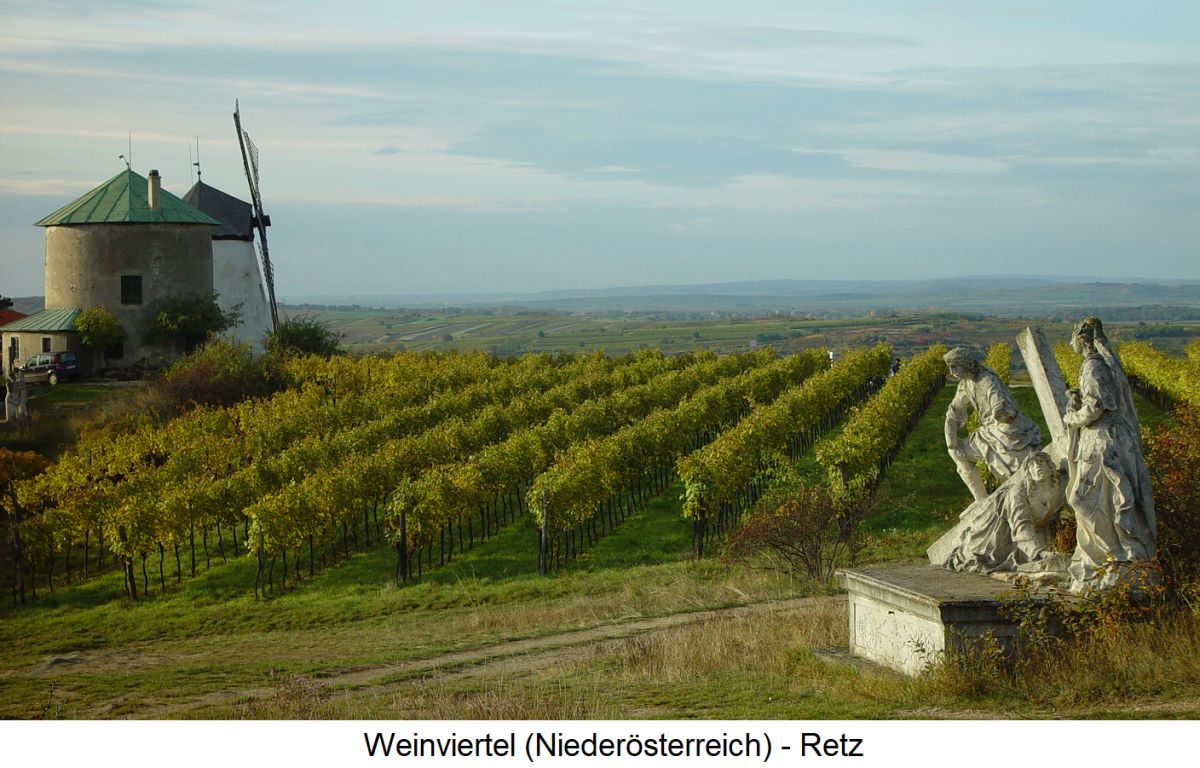Today's wine-growing region of Weinviertel in Lower Austria used to be divided into the two independent wine-growing areas of Retz (in the west) and Falkenstein near Poysdorf (in the east), named after their respective main wine-growing locations. Retz vineyards were first mentioned in documents as early as 1155. Around 1200, the famous minnesinger Walther von der Vogelweide (1170-1230) is said to have enjoyed Retz wines in the Zehenthofkeller. Count Berthold von Rabenswalde (1278-1312) had a new town built on the foothills of the Manhartsberg in 1300 and moved his seat to this place; this was the birth of Retz. The town was later given its own protected wine-growing area and developed into the important wine-trading centre of the region. Towards the end of the Thirty Years' War, the Swedes marched into Retz in 1645. The following rhyme tells of the commander's hard drinking: Captain Hensius from Swedenland, well known as the greatest drinker, drank in four and a half months at twenty buckets of wine, which for the day would be two dozen quarts.

The subterranean Retz is criss-crossed by wine cellars up to 30 metres deep and up to three storeys high. Today, there are cellar corridors with a total length of 21 kilometres, which is more extensive than the streets and alleys of the city. This is due to a privilege granted by the Hungarian king Matthias Corvinus (1440-1490). Every citizen was allowed to trade in wine and anyone who owned a cellar was allowed to enlarge it as needed. The cellar vaults, driven deep into the loess, have an ideal temperature between 8 and 10 °Celsius and a humidity of 90%. The total vineyard area, including the sub-villages of Unter-, Mitter- and Oberretzbach, is around 1,000 hectares, 70% of which are planted with white wine varieties. Here Grüner Veltliner dominates, followed by Welschriesling, Weißburgunder (Pinot Blanc) and Riesling. The most important red wine varieties are Blauer Portugieser and Zweigelt. Well-known vineyards are Altenberg, Klafel, Satzen and Züngel. Retz is also home to one of the testing centres for the granting of the state testing number.
Picture: © ÖWM - Armin Faber
Voices of our members

The Wine lexicon helps me to keep up to date and refresh my knowledge. Thank you for this Lexicon that will never end in terms of topicality! That's what makes it so exciting to come back often.
Thorsten Rahn
Restaurantleiter, Sommelier, Weindozent und Autor; Dresden